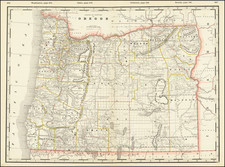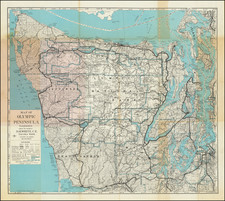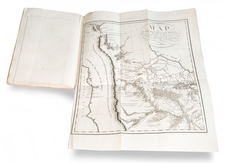Rare variant edition of this interesting transitional map of the Northwest, published by S.A. Mitchell Jr..
While Oregon now appears with its statehood borders, Washington Territory continues to run east to the Rocky Mountains, but does not wrap around Oregon on the east side, as is normally the case with the the 1863 edition of the map. Instead, a newly formed Idaho Territory appears but extends north only to the Gold Regions to the north of the Salmon River, rather than to the 49th Parallel. In the next edition, Idaho Territory will be shown in its most massive configuration, extending to the 49th Parallel and including large parts of Montana and Wyoming.
The map notes the Idaho Gold Regions and the Gold Regions in the Bitter Route Mountains which will become Western Montana, and shows early routes of exploration, towns forts, rivers, lakes, mountains, mines, Indian lands, early counties and a host of other details.
This is the first time we have ever seen this edition of the map., which was likely only published for a few months at the end of 1863.
SA Mitchell Jr. acquired his father's former business from DeSilver in 1860 and relaunched a very successful atlas publishing business which survived another 20+ years, before licensing and selling off much of his inventory and rights.
Samuel Augustus Mitchell Jr. inherited the Mitchell Company from his father in 1860. For over thirty years, the company had specialized in the production of school atlases and wall maps of America. They were one of the pioneers on engraving on steel plates. In 1860, Samuel Jr. released the New General Atlas, which had been compiled in house and replaced a previous atlas by Tanner. The elder Mitchell died in 1868 and Samuel Jr. continued the business until the 1890s. At its height, the Mitchell Company employed 250 people and sold 400,000 publications annually.












![[Map of the United States, illustrating the routes of the Canadian Pacific Railway and the Seattle, Lake Shore and Eastern Railway]](https://storage.googleapis.com/raremaps/img/small/71080.jpg)
![[Columbia Basin Irrigation Project] Panoramic Perspective of the Spokane Region including the Geological and Scenic Wonderland Embracing the Columbia Basin Irrigation Project and Coulee Dam . . . 1946](https://storage.googleapis.com/raremaps/img/small/77423.jpg)
